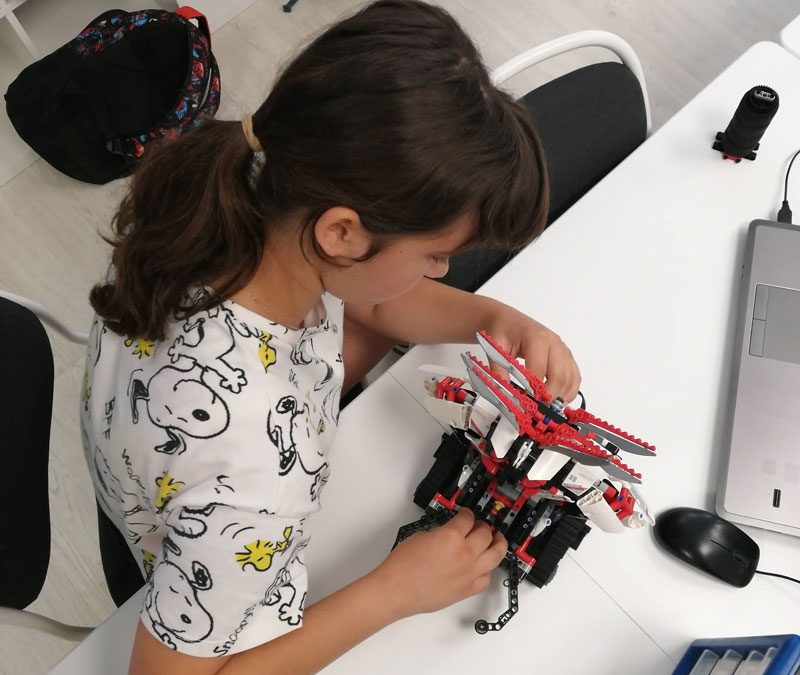We live in the digital age, and technology has completely transformed our lives and is present in almost every aspect. Over the past few years, technology has also made its way into the education sector, with educational robotics being one of the primary avenues. Robots, which were once just science fiction characters, have found their place in the classrooms of schools and high-schools and are proving to have a very positive impact on children’s learning. Thus, below are 7 benefits of educational robotics that directly contribute to the holistic development of children.
1. Fosters Logical Thinking and Problem Solving
Educational robotics involves young learners in creating, programming, setting up, and controlling robots. This activity requires the use of logical thinking and problem-solving skills, in other words, the development of computational thinking. Children need to figure out how to program a robot to perform specific tasks. As they face different challenges and overcome obstacles, children learn to analyze the situations they encounter, identify the best solution in each case, and adapt to the needs of the moment. This adaptability and reasoning ability are part of a set of fundamental skills that can be applied not only in school but also in various aspects of life.
2. Encourages Creativity and Innovation
Robotics and programming are often seen as “closed” disciplines that limit children’s creativity. However, they actually have the opposite effect by stimulating creativity and ingenuity from the early stages of schooling. The opportunity to design and customize their robots allows children to explore their creativity and experiment with various ideas. Educational robotics teaches young learners that there is not a single solution, and they can find different ways to achieve the desired result, encouraging them to try out all their ideas and approach challenges from different perspectives to achieve a specific goal.
3. Facilitates Practical STEM Learning
Educational robotics is an effective way to introduce scientific and technological concepts in a practical and tangible way. Students can acquire knowledge of mechanics, electronics, coding and other STEM disciplines while interacting and having fun with robots. It is a hands-on experience that helps improve their understanding of theoretical concepts, presents them in an engaging and motivating manner for young learners, and sparks an interest in STEM fields, steering them away from the notion that these are overly complicated subjects.
4. Enhances Collaboration Skills
Robotics projects can foster skills such as teamwork. Children learn to communicate, collaborate, and share ideas as they work together to build and program their robots. This collaboration can be applied in the workplace, where the ability to work as a team is essential. Additionally, this way of working also teaches them to appreciate and harness all their individual strengths to achieve common goals.
5. Develops Patience and Perseverance
Designing and programming robots is not always an easy work. Children must face challenges and obstacles that require time and effort to overcome. This process teaches young learners the importance of patience and persistence. They learn that results are not always immediate, but with dedication and perseverance, they can overcome difficulties and achieve their goals.
6. Prepares for the Future Job Market
Technology plays an increasingly significant role in the job market, and robotics is part of the transformation that many jobs are undergoing. Introducing children to educational robotics from an early age provides them with a solid foundation of new knowledge that will enable them to understand and work with emerging technologies in the future. The skills they can acquire through robotics, programming, and computational thinking are highly valued in an expanding range of sectors.
7. Boosts Confidence in Digital Skills
In a digitized world, having technology-related skills is essential. Educational robotics helps young learners develop confidence in their digital skills and their ability to interact with technology practically, turning them into creators rather than just consumers of technological products. As children gain experience in creating and programming robots, they become more comfortable working with electronic devices and software, making them increasingly capable of facing any technological challenge.
In conclusion, educational robotics plays a transformative role in children’s education because, beyond teaching them technical skills, it also helps them develop various transferable skills applicable to any field, such as logical thinking, problem-solving, creativity, or teamwork, providing them with the necessary tools to tackle the challenges of the 21st century.

